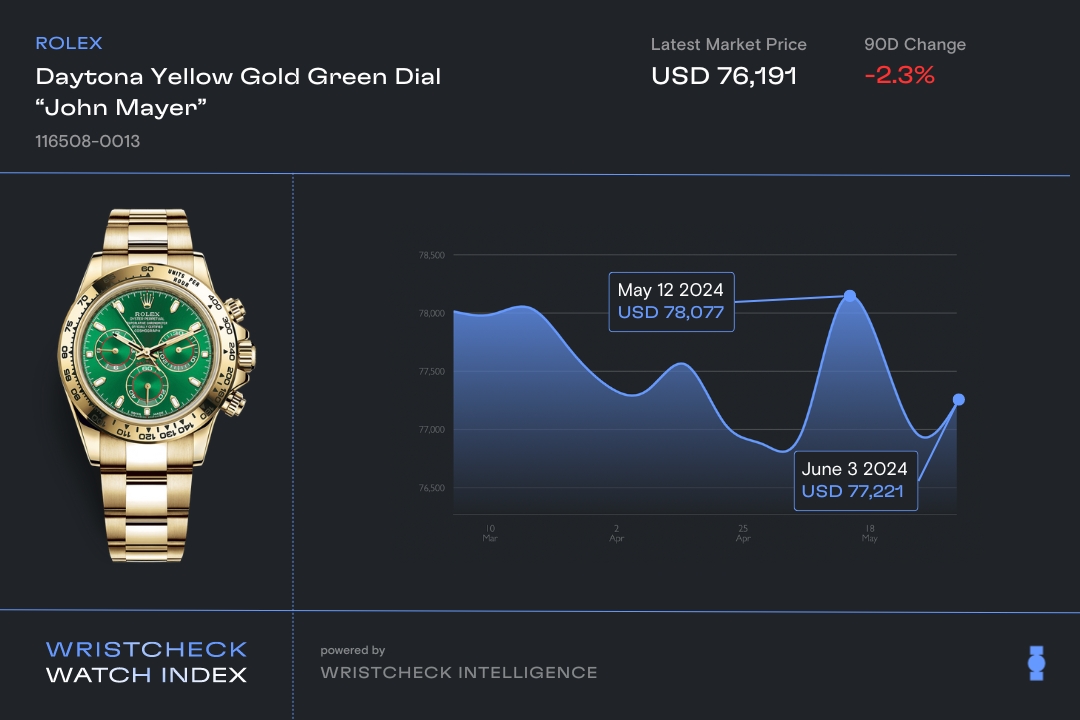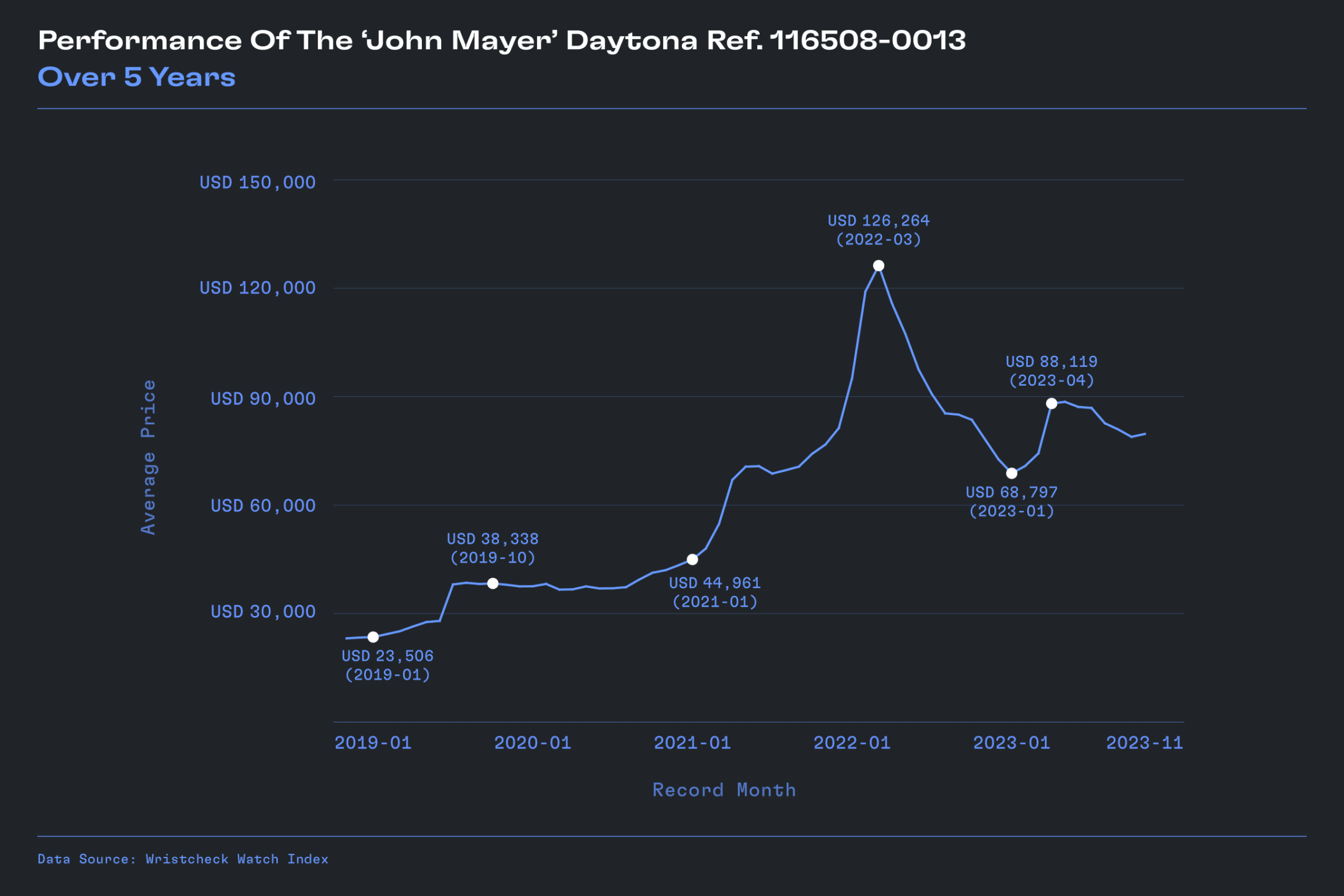
What’s The Big Deal About Discontinuations
We delve deeper into how discontinuation influences watch prices in the secondary market
Most of the narrative about watch collecting is about the 'new'. Nine out of 10 stories we read are about 'novelties', and the algorithms love serving us posts with 'new watch alerts' or 'incomings'. Focusing on the new might make perfect sense, but it's only half the story. For every watch that’s added to a catalog or a collection, there's a very good chance that a watch exits to make way for it.
For collectors this is as easy as selling a watch to make some space in the watch box. For brands, the process is a little more complicated. When it comes to determining which watches are removed from the market, there's a few key determining factors, all of which can have an impact on how a watch performs on the secondary market.
Why Do Watches Get Discontinued
One of the most common rationales for discontinuation is the incremental update. Even though many of the world's most successful watch designs have been around for decades, they actually evolve quite a lot over the years. Imperceptible changes like improvements to movements, refined case ergonomics or a new bracelet are all largely unnoticeable reasons to update a core product. Watch buyers tend to notice a bit more when its proportions or dial designs get tweaked, but even then, only the most die-hard will remember these incremental changes a few years on. There's another reason why a watch gets the chop, and it's a lot simpler: it doesn't sell. Like it or not, the history books of watches are full of designs (some of them great) that few people remember because even fewer people bought them.

Not all discontinued watches fade into obscurity, however. Watches phased out for an update — especially popular watches from big brands often live on well after they've stopped being available from the boutique. The best-known examples, unsurprisingly enough, are those from mega brands like Rolex, Patek Philippe and Audemars Piguet. This year alone, Rolex discontinued a swathe of watches, a trimming of the catalog that didn't see any replacement models announced (yet). The Yacht-Master II, a long-neglected model, was finally phased out, a move that wasn't particularly surprising as it hasn't been a focus for Rolex for some time. Another logical change was the Rolex Sea-Dweller Deepsea, axed because the

A less expected move was the exiting of the attention-seeking Palm Motif and Fluted Motif dials — laser-etched dials introduced in 2021 that came in a wide range of variations. While this might have been a shock for many still waiting for allocation, it makes sense in the broader sense of Rolex's release schedule, as the brand often introduces bold or unusual dials with a shorter lifecycle than their core dial range. Another surprising discontinuation from the Crown was the Rolex Daytona Le Mans 126529LN, released in 2023 to celebrate 100 years of the iconic raceway. Again, the short shelf life for this wildly popular model can be explained by the fact that a centennial celebration can only really run for one year.
The Impact Of Discontinuation On Secondary Market
Of course, the sudden disappearance of certain popular models — typically to make way for an update — can cause ripples in the market, as fans rush to try and secure the last production models. Supply dries up, demand increases and prices go up. At least, that's the theory. The reality is less simple. It's easy (and tempting) to buy into the dream of the hard-to-find hype watch becoming the dream investment. The reality is a lot less certain. Even hot models from blue-chip brands aren't a sure thing. While the idea of wearing your investment on the wrist is tremendously appealing, if you're looking for reliable returns, try the Fortune 500.
That's why being educated on the ups and downs of the watch market is so important. Wristcheck's Watch Index, which tracks the 100 most popularly traded watch models, is an invaluable tool for research and benchmarking — and the results on some of the recently discontinued Rolex models are insightful. We've looked at a handful of the discontinued Palm and Fluted Motif dials to see how they've traded since they left the catalog. Reference 126234-0056, the 36mm Datejust with a green Palm Motif dial and diamond hour markers was down 0.97% in the last 30 days and 2.91% in the last 90.

Keeping with the green themes, the reference 126300-0022, a green fluted dial with a smooth bezel on Oystersteel was up 0.92% in the last 30 days, and 2.08% in the last 90. Proving that blue is a more popular color, the jubilee version in blue Fluted Motif, reference 126300-0024 is up 2.17% in the last 30 days, and 3.08% in the last 90. The effect on more exclusive Rolex models can be more dramatic — for example, the Le Mans Daytona has seen a significant bump in value since it became unavailable — it's up 37.70 % in the last ninety days, and while it's seen a slight drop of 0.27% in the last 30, its strong performance looks set to continue. In a broader context, the Daytona makes a good case study, as the entire collection was updated last year, meaning plenty of hotly in-demand models have left the primary market. One much-touted model is the reference 116508-0013 in yellow gold with a green dial, better known as the 'John Mayer'. Proving the theory that nothing can stay hot forever, the price of this reference has trended down by 12.76% over the last 12 months.


Rolex might be the market leader, but they're one of many. Patek Philippe and Audemars Piguet also have a strong reputation for holding – and even gaining – value. We looked at a few key references discontinued fairly recently to see how they hold up. For many, the Audemars Royal Oak Jumbo 15202 is often held up as one of the most accurate interpretations of Genta's original design. It's been replaced by the 50th anniversary 16202, a watch with a more modern movement, among other minor changes. Of course, as is often the case with a watch this popular, its market value is already far beyond retail, but how has the 15202 fared in recent months, now that its discontinuation is no longer fresh news? Well, over the last 90 days, it's down 4.02%, with a minor deviation of 0.88% in the last 30.
Of course, the poster child for discontinued watches has to be the Patek Philippe 5711, which saw the last few years of its reign marked by untenable demand and a lengthy swan song, which, combined with wider market conditions, led to some incredibly buoyant prices.

Undoubtedly, the market value of the ref. 5711 has consistently outstripped its retail price by a significant margin, irrespective of its dial variation. This phenomenon underscores the fervent demand for this timepiece, especially after its discontinuation in 2022. While the exact figures have seen fluctuations in recent years, premiums over the retail price have ranged from a peak of 350% to the current 200%. Presently, this premium breaks down to nearly 200% increase for the blue dial variant and a 180% increase for the white dial variant, resulting in respective market values of $91,697 and $86,248.

Two years on, we might not have a stainless steel successor to the 5711/1A-001, but we have a better sense of its performance over time; in the last 12 months, it's lost 13.34%, a figure which is on par with other members of the 5711 family. The rose gold 5711/1R-001 is down 11.52% in the last year, while the white dialed 5711/1A-011 is down 7.12%, and the 5711/1A-010 is down 8.97%. Even the swan song olive green-dialled 5711/1A-014 has trended down to the tune of 15.07% in the last year. Of course, this watch in particular traded so stratospherically high, correction is inevitable. Great news if you managed to get one at retail, but if you bought at the peak, thinking that the only way was up, not even the power of Patek Philippe is immune to the ups and downs of the market.
It's a dangerous game to assume that a watch — even a popular one — will suddenly spike in value simply because it's been discontinued. The reality is that for commercially produced watches, novelty sells, and the market's attention will be firmly focused on the latest and greatest. Of course, there are a handful of standouts that outperform the pack and make for good headlines. It's far more productive to trust in solid data, like that provided by Wristcheck's Index.
